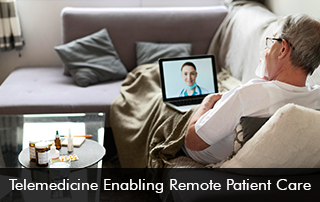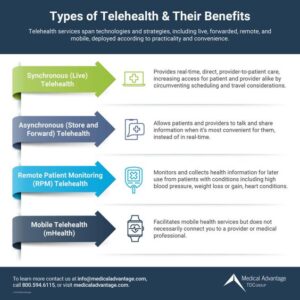Telemedicine, or remote patient care, utilizes digital communication technologies to deliver medical services and consultations remotely. This innovative approach has revolutionized patient care by breaking down barriers of time and distance. In this blog post, we will explore the benefits of telemedicine and how it enables remote patient care in a connected world.
Access to Remote Patient Care Anytime, Anywhere
Telemedicine eliminates geographical limitations and provides patients with access to healthcare services regardless of their location. Whether residing in remote areas or facing mobility challenges, patients can easily connect with healthcare providers using video conferencing, phone calls, or secure messaging platforms. Telemedicine ensures that patients receive timely care, reducing the need for unnecessary travel and waiting times.
Improved Healthcare Accessibility
For individuals living in underserved or rural areas, access to specialized healthcare services can be limited. Telemedicine bridges this gap by connecting patients to healthcare professionals remotely. Patients can receive expert consultations, second opinions, and ongoing care without the need to travel long distances. By improving healthcare accessibility, telemedicine ensures that patients can access the care they need, regardless of their location.
Continuity of Remote Patient Care
Telemedicine plays a vital role in maintaining continuity of care, especially for individuals with chronic conditions or those in need of regular follow-ups. Remote patient monitoring allows healthcare providers to remotely track patients’ vital signs, symptoms, and progress. With telemedicine, patients can have virtual appointments and receive personalized care plans, medication management, and preventive guidance, ensuring their healthcare needs are met consistently.
Time and Cost Savings
Telemedicine offers significant time and cost savings for both patients and healthcare providers. Patients can avoid the time and expenses associated with travel, parking, and waiting rooms. Additionally, telemedicine eliminates the need for taking time off work or arranging transportation for medical appointments. Healthcare providers also benefit from time savings by efficiently managing their schedules through virtual consultations, reducing administrative tasks, and optimizing their resources.
Enhanced Remote Patient Care Engagement
Telemedicine fosters patient engagement and empowers individuals to take an active role in their healthcare. Through telemedicine platforms, patients can access their medical records, receive educational materials, and actively participate in their treatment plans. The ease of communication and virtual interactions enable patients to ask questions, seek clarifications, and develop a deeper understanding of their health, leading to better health outcomes.
Limiting the Spread of Infections
The recent global health crisis has highlighted the importance of remote healthcare solutions in limiting the spread of infections. Telemedicine enables healthcare providers to offer triage, initial assessments, and follow-ups remotely, reducing the need for in-person visits. By minimizing exposure and crowded waiting rooms, telemedicine helps safeguard both patients and healthcare professionals from contagious diseases.








